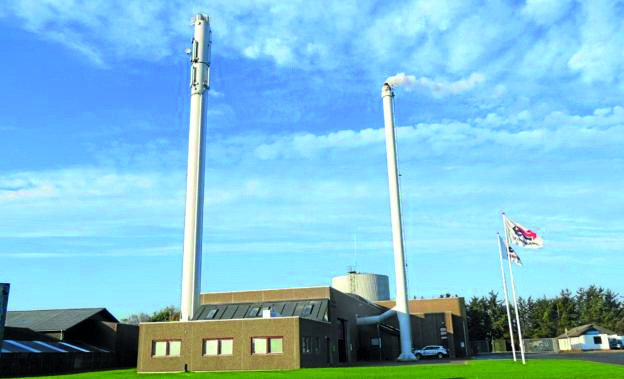Solution provider

Case
District heating
District energy


Add the case to your visit request and let us know that you are interested in visiting Denmark
Use of Online Data for Condition Based Renovation.
Approximately one in four homes in the supply area around Løkken, Denmark is a holiday home, and this share is increasing. This places high demands on keeping the pipelines warm as opposed to all-year houses with a constant baseload. Moreover, rental houses have greater demands for useful metre readings, because it can take a while to discover possible damaged metres.
In 2016, Løkken Fjernvarme began to dig up the oldest pipelines in the distribution system and found that many of them were in a good condition. The replacement, which was part of a long-term renovation plan, was therefore paused after a couple of years until the data basis for carrying out condition-based renovation was in place. In connection with replacing settlement metres, it was decided to move from drive by to an aerial solution, so that data from the metres could be used for analyses, etc.
Løkken Fjernvarme has combined new metres from Kamstrup with the visualisation tool Heat Intelligence, which is Kamstrup’s analysis platform that combines facts about the pipelines in the network with data from the remotely read metres. This provides a good basis for optimising the district heating network. The solution was implemented in less than one year to support the use of a motivation tariff and to ensure a quick return on the investment.
Network reading, new readers and new analysis software have contributed to lower pressure in the network, efficient leak detection and optimised renovation of pipelines, because the district heating company now has the right decision basis.
The annual software licence is quickly paid for by the optimisations and savings made because the district heating company uses Heat Intelligence. Previously 5 percent of the operator’s time was spent on meter reading.
This time can now be spent on more value-creating tasks. The district heating company’s new decision-making basis is completely different from the annual snapshot generated by the modelling tool they used to have. Today, Heat Intelligence is fully available online 365 days a year, and he can go back, look into a specific development and learn from it. This is a huge gain.
After a short period with the new solution, Løkken Fjernvarme has achieved tangible results by optimising the distribution network. Among other things, the district heating company has succeeded in lowering the average pressure from 1.2 to 0.7 bar and to around 1 bar in peak periods. This has resulted in annual savings of € 2.000-3000 for thedistrict heating company. They also use Heat Intelligence to look at behaviour in terms of when the energy has to be accumulated in the network in the mornings. They used to work on the basis of assumptions, but now they have a toolfor the task.
Moreover, Løkken Fjernvarme has used Heat Intelligence to achieve a more balanced flow in the two main pipes. Although the town has grown, the district heating company set the valves in the network as they always had, but new knowledge about the number of cubic metres flowing around the system revealed that some valves had been set incorrectly. After implementing Heat Intelligence, it became clear that the load on the distribution system was extremely uneven.
The load distribution used to be 80/20, but now it is 50/50. This has resulted in less wear and stress on the pipelines, and in a significantly lower pressure. Consequently, the company now uses less energy and less money on pumping water in the system.